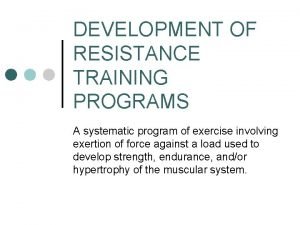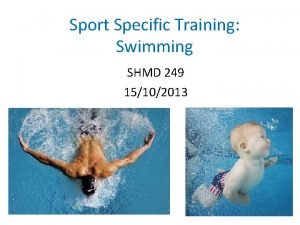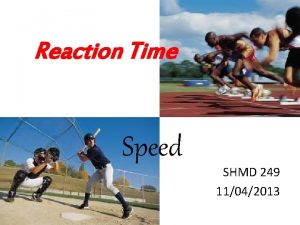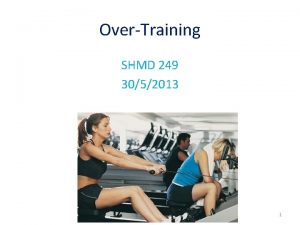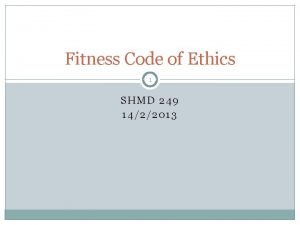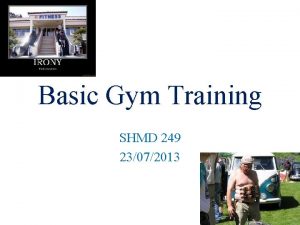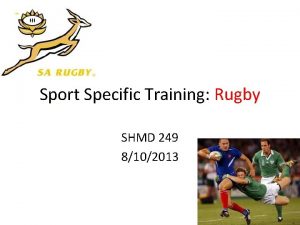Periodization SHMD 249 1382013 1 Periodization is an














- Slides: 14

Periodization SHMD 249 13/8/2013 1

Periodization is an organized approach to training that involves progressive cycling of various aspects of a training program during a specific period of time. It is a way of alternating training to its peak during season. 2

General Adaptation Syndrome • The roots of periodization come from Hans Selye’s model, known as the General adaptation syndrome (GAS), describing biological responses to stress. • The GAS describes three basic stages of response to stress: • (a) the Alarm stage, involving the initial shock of the stimulus on the system, • (b) the Resistance stage, involving the adaptation to the stimulus by the system, and • (c) the Exhaustion stage, in that repairs are inadequate, and a decrease in system function results. 3

Periodization The foundation of periodic training is keeping ones body in the resistance stage without ever going into the exhaustion stage. By adhering to cyclic training the body is given adequate time to recover from significant stress before additional training is undertaken. 4

Eustress vs. Distress • Eustress: when physical stress is at a healthy level an athlete experiences muscular strength and growth. • Distress: excessive physical stress can lead to tissue damage, disease, and death. • Periodization systematically alternates high loads of training with decreased loading phases to improve components of muscular fitness (e. g. strength, strength-speed, and strengthendurance) & prevent over training. 5

Periodization • Periodic training systems typically divide time up into three types of cycles: • Microcycle: 7 days (1 week) (Planned based on where it is in the overall macrocycle). • Mesocycle: 2 weeks – few months. • Macrocycle: refers to the overall training period, usually representing a year or two. 6

Theory of Planning • Training should be organized and planned in advance of a competition or performance. • It should consider the athlete’s potential, • his/her performance in tests or competition, and calendar of competition. • It has to be simple, and above all flexible as its content can be modified to meet the athletes rate of progress. 7

Macrocycle COMPETITIVE PHASE GENERAL PREPERATION TRANSITION PHASE SPECIFIC PREPARATION 8

Mesocycle MESOCYCLE COMPETITIVE PHASE PREPARATORY PHASE 1 2 3 4 MICROCYCLE 5 6 1 2 3 4 MICROCYCLE The goal of a mesocycle is to make sure the body peaks for the high priority competitions by improving each cycle along the way. 9

Preparation Phase • Modest strength development. • High volume (3 -5 sets; 8 -12 reps). • Low intensity workouts (50 -80% 1 RM). • Flexibility, aerobic & anaerobic training. 10

First Transition Phase • Emphasize strength development. • Moderate volume (3 -5 sets; 5 -6 reps). • Moderate intensity (80 -90% 1 RM). • Flexibility + interval aerobic training. 11

Competition Phase • Low volume (3 -5 sets; 2 -4 reps). • High intensity (90 -95% 1 RM). • Short periods of interval training. 12

13



